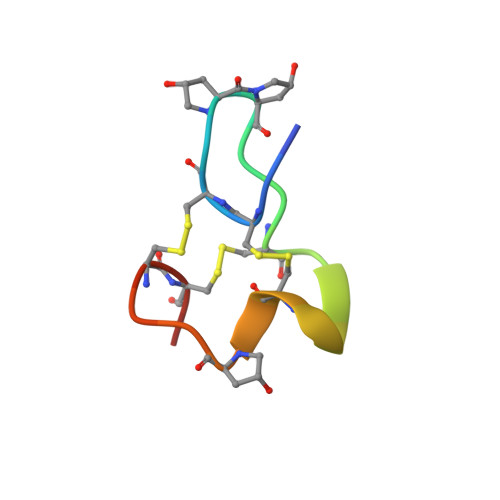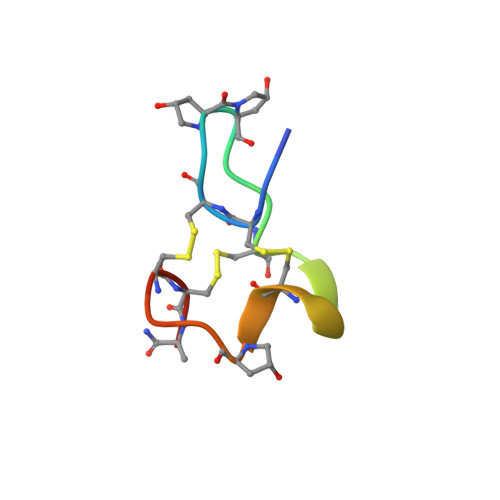Structure-activity relationships of mu-conotoxin GIIIA: structure determination of active and inactive sodium channel blocker peptides by NMR and simulated annealing calculations.
Wakamatsu, K., Kohda, D., Hatanaka, H., Lancelin, J.M., Ishida, Y., Oya, M., Nakamura, H., Inagaki, F., Sato, K.(1992) Biochemistry 31: 12577-12584
- PubMed: 1335283
- DOI: https://doi.org/10.1021/bi00165a006
- Primary Citation of Related Structures:
1TCG, 1TCH, 1TCJ, 1TCK - PubMed Abstract:
A synthetic replacement study of the amino acid residues of mu-conotoxin GIIIA, a peptide blocker for muscle sodium channels, has recently shown that the conformation formed by three disulfide bridges and the molecular basicity, especially the one around the Arg13 residue, are important for blocking activity. In the present study, we determined the three-dimensional structure of an inactive analog, [Ala13]mu-conotoxin GIIIA, and refined that of the native toxin by NMR spectroscopy combined with simulated annealing calculations. The atomic root-mean-square difference of the mutant from the native conotoxin was 0.62 A for the backbone atoms (N, C alpha, C') of all residues except for the two terminal residues. The observation that the replacement of Arg13 by Ala13 does not significantly change the molecular conformation suggests that the loss of activity is not due to the conformational change but to the direct interaction of the essential Arg13 residue with the sodium channel molecules. In the determined structure, important residues for the activity, Arg13, Lys16, Hyp(hydroxyproline)17, and Arg19, are clustered on one side of the molecule, an observation which suggests that this face of the molecule associates with the receptor site of sodium channels. The hydroxyl group of Hyp17 is suggested to interact with the channel site with which the essential hydroxyl groups of tetrodotoxin and saxitoxin interact.
Organizational Affiliation:
Faculty of Engineering, Gunma University, Japan.

















